Search Images
Browse Content (p. 1670)
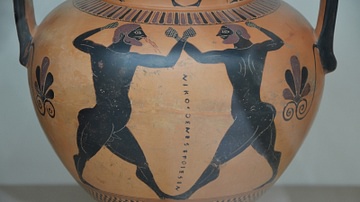
Image
Amphora showing a boxing contest
Black-figured amphora showing a boxing contest, made in Athens about 550-500 BCE, signed by the potter Nikosthenes, from Agrigento (Sicily). The boxers wearing himantes (leather thongs bound on the fist) are about to exchange blows. The boxer...
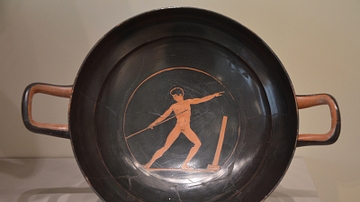
Image
Attic Red-figure Kylix
Attic red-figure cup (kylix) depicting an athlete ready to throw the javelin, from Vulci (Italy), around 440/430 BCE.
(Altes Museum, Berlin).
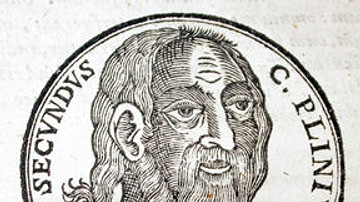
Image
Pliny the Elder
Pliny the Elder from a 1635 CE printing of Historia Naturalis.
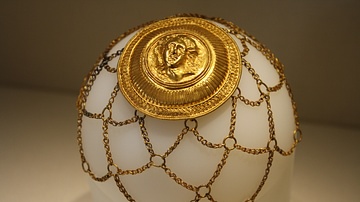
Image
Gold Hair Ornament
Gold hair ornament from Agrigento, Sicily, 3rd century BCE. The central medallion depicts Medusa.
Archaeological Museum of Agrigento.
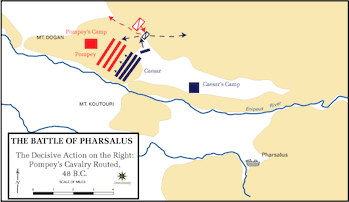
Image
Battle of Pharsalus
The initial troop positions of the battle of Pharsalus in 48 BCE between Julius Caesar and Pompey the Great. In red are the 11 legions of Pompey with cavalry on the left flank against Caesar's 9 legions in blue.

Image
Egyptian Beadnet Dress (Detail)
Egyptian beadnet dress from the reign of Khufu, 4th Dynasty, Old Kingdom of Egypt, 2551-2528 BCE. This beadnet dress is the earliest surviving example of a garment with the lozenge pattern. This pattern is frequently used when depicting...

Image
Head of Penelope
Head of Penelope (the faithful wife of Odysseus), from Rome, now on display in the Ny Carlsberg Glyptotek, Copenhagen. Hadrianic copy of a Greek original from the 5th century BCE.
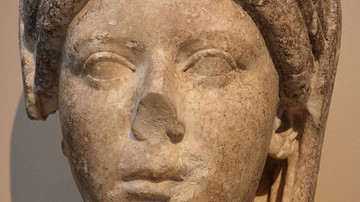
Image
Vestal Virgin, British Museum
Marble head from a portrait statue of a veiled priestess of the goddess Vesta. The headdress identifies the subject as a Vestal Virgin. Above her hair are six folds of the infula, a long woolen band wrapped around the head to hang in two...
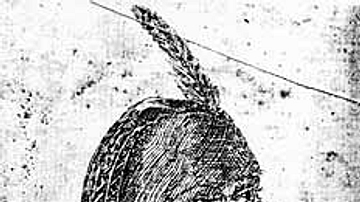
Image
Chickasaw Head
A sketch of a Chickasaw, found in Southeastern Indians: Life Portraits (1775).
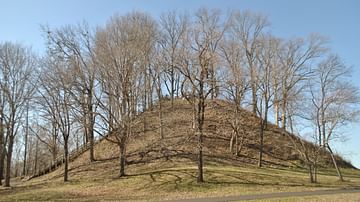
Image
Sauls Mound
Sauls Mound is arranged so that its corners are arranged in the four cardinal directions. It is believed to have some ceremonial function, and likely has a central role in the Woodland People's religious cosmology. Pinson Mounds State Archeological...